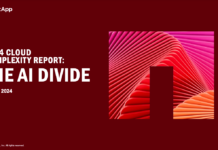Despite the existence of channels like crowdfunding platforms or social media, fundraising projects tend to get drowned out in the sea of information floating around the internet, proving that a one-size-fits-all marketing approach cannot paddle organisations to shore.
This was what threatened to capsize Nanyang Technological University’s proverbial boat: The academic institution found that conventional outreach methods were unreliable, and limited their capabilities to raise funds for student scholarships, awards, and financial aid.
As a result, the university decided to chart a new course for success.
Lien Siaou-Sze, Vice President (University Advancement), Nanyang Technological University, Singapore, as well as Soo Mei May, Director, AI Decision Science, APJC, Dell Technologies, sat down with Frontier Enterprise to talk about their organisations’ partnership, and how machine learning reignited NTU’s fundraising engine.
Uncharted waters
In order to be more efficient in the deployment of their resources to manage costs, improve ROI, and create greater fundraising impact, NTU opted for a more accurate and selective marketing approach.
Partnering with Dell was only the first step. As both parties plunged into how ML could solve NTU’s challenges, a couple of obstacles immediately came into picture.

“One of the biggest challenges was aligning the understanding of business stakeholders and data scientists. Often, both groups would be describing two sides of the same coin; from different angles and using different descriptive terms that are familiar to each of them. This is often the case in many projects, so bridging the communication gap is key,” NTU’s Lien Siaou-Sze said.
The process started with stakeholders describing the problem they wanted resolved, followed by a short and simple introduction of how data science can help eliminate the problem.
“It then takes a few more sessions to comb through the data, understand the granularities, and ensure that both parties thoroughly understand the data that is being explored, along with subsequent solutions,” she continued.
For Dell, the first step involved their data scientists understanding the business process and parameters for shortlisting alumni.
“We considered the demographic distribution of alumni, appeal themes, and the channels used to reach out to this group. These elements form the basis of feature engineering in data science, allowing us to create input data for building models,” explained Dell’s Soo Mei May.
Aside from these, NTU and Dell had to convince the former’s frontline team to embrace ML-powered solutions.
“This required support from management, consistent communication and interaction, and providing thorough insight and information to the entire organisation, to reinforce the benefits of ML-driven solutions,” Lien said.
Further into the depths
After aligning the teams of NTU and Dell, the project finally sailed from shallow waters.
Using the historical responses of alumni to train the model for predicting probability and capacity of each individual, the data scientists came up with an ensemble model, which combined models based on different outreach channels and different appeal themes.

“The model was trained to understand what the preferred channel and appeal theme was for each alumni. We could then use the model to generate a list of alumni for each appeal with a higher hit rate and higher contribution amount,” Dell’s Soo Mei May said.
Dell leveraged LightGBM (short for light gradient-boosting machine), a free and open-source distributed gradient-boosting framework for machine learning.
“There is a common misunderstanding that modelling is the most important part of data science or AI/ML. However, it is actually the knowledge of subject-matter experts that leads to advanced feature engineering, which is the most critical part in ensuring a good working model,” she clarified.
In addition to contributing towards the development and deployment of the current ML models, Dell’s volunteer data scientists also helped train NTU’s young data analytics team to improve their skill sets — both the hard technical skills, and the soft skills in understanding and managing business stakeholders.
After deploying LightGBM, NTU saw a 28% year-on-year increase in annual participation rate with 43% fewer appeals sent.
“Three months after rolling out this solution, the monthly recurring gifts from NTU’s alumni segment increased by 50%. The model is also deployed for a few appeals by predicting the preferred channel of alumni outreach, and one of the appeals raised 51% more gifts and 140% increase in donors compared to similar appeals done in previous years,” Soo revealed.
Open seas
Following the successful undertaking, Dell is seeing a range of other ML benefits for NTU.
“There are opportunities for us to extend the ML-driven model to other use cases across the university, such as leveraging machine learning to detect and protect against transactional and financial fraud, predict propensity of prospective students to enrol in NTU, and many more,” Dell’s Soo Mei May shared.
“Other potential applications could be in our students and alumni engagement analytics, to improve student learning and engagement with the university,” NTU’s Lien Siaou-Sze added.
At its NTU Smart Campus, the university is currently pioneering advanced solutions, semi-autonomous robots that disinfect surfaces, and deliver food on demand.
“We are also investing millions over the next year to ramp up solar energy production to power NTU’s buildings and facilities. Over 13,000 new solar photovoltaic panels will be installed on campus, in addition to the university’s existing 19,000 solar panels installed in 2015,” Lien continued.
All these form part of NTU’s 2025 strategic plan, which aims to leverage technology to solve humanity’s grand challenges, such as productivity and sustainability.
















